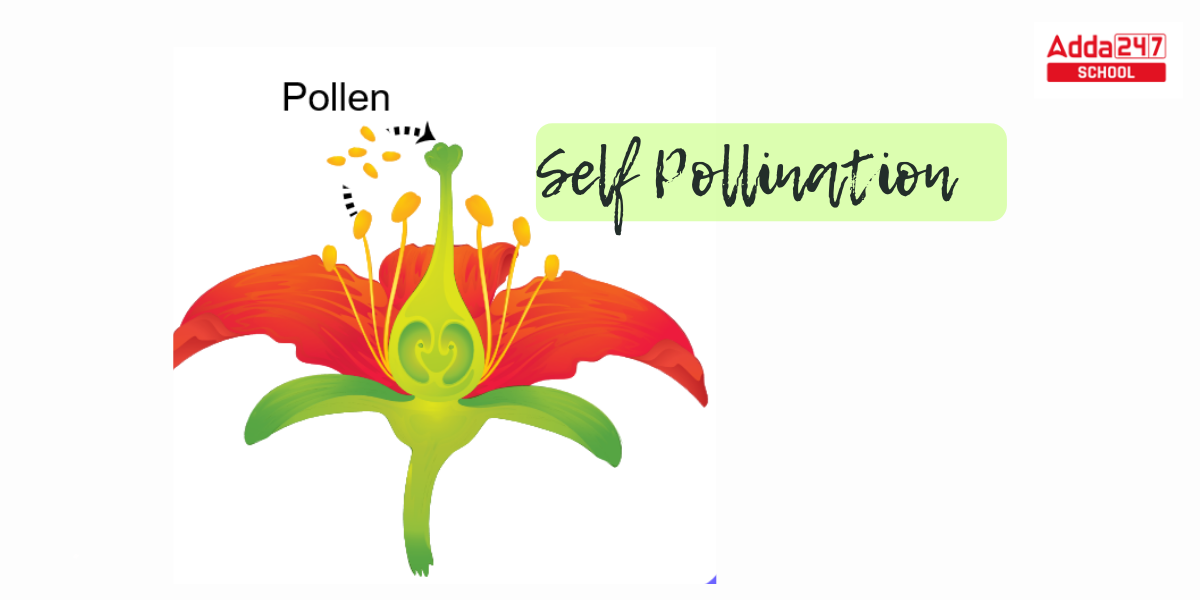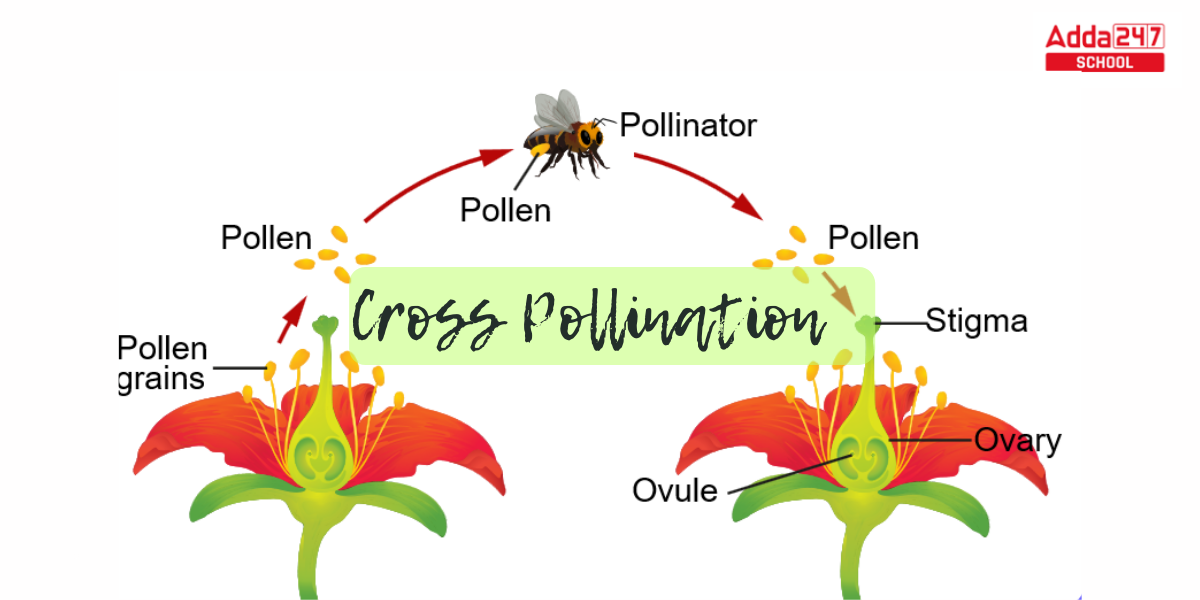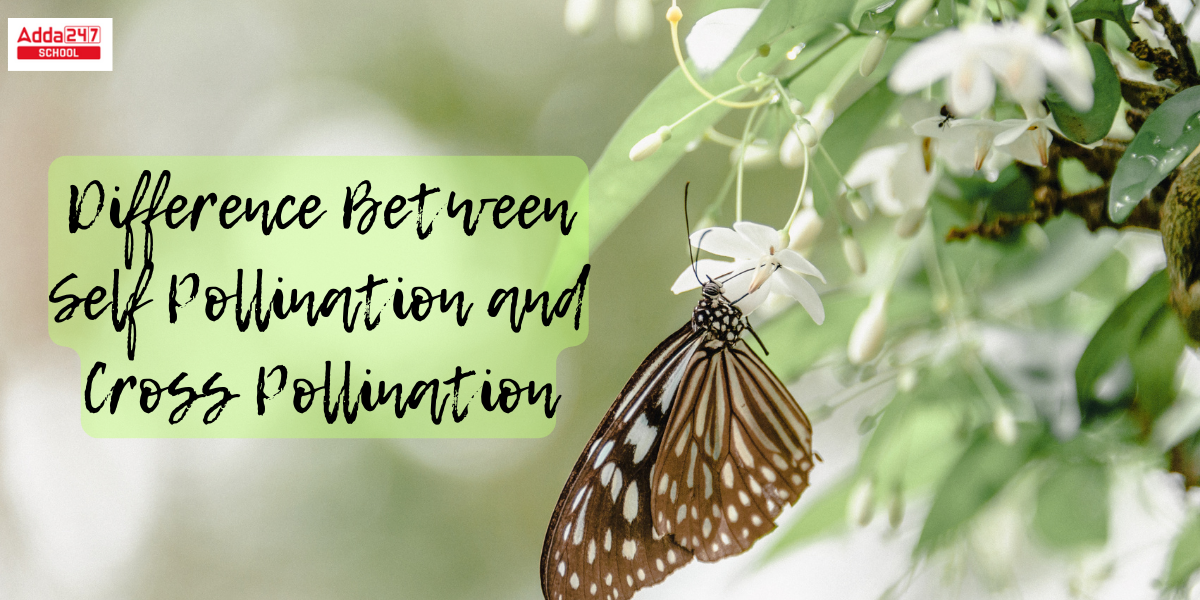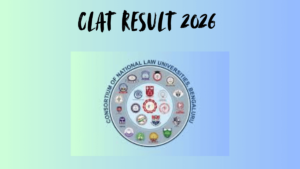Difference Between Self Pollination and Cross Pollination: Cross-pollination and self-pollination are both significant events in plant reproduction. We should first understand the definition of pollination before diving into pollination kinds. Pollination is the process of transporting pollen grains from a flower’s male anther to its female stigma. Pollination can be classified into two types: cross-pollination and self-pollination. The Most Important Difference Between Self Pollination and Cross Pollination is the Source of Pollen and the Diversity of Genes Both Create.
Difference Between Self Pollination and Cross Pollination Class 10
In the 18th century, Christian Konrad Sprengel discovered the process of pollination. Agriculture and horticulture both benefit from pollination. Pollen grains from a flower’s anther migrate to the stigma of the same bloom, resulting in self-pollination. Autogamy is another term for self-pollination. Cross-pollination occurs when pollen from one bloom is transmitted to the stigma of another plant of the same species. Read the entire article to learn more about Cross and Self Pollination and to better understand the Difference Between Self Pollination and Cross-pollination.
Difference Between Self Pollination and Cross Pollination
What is Self Polinition ?
When pollen from the anther gets stuck on the stigma of the exact same flower or another flower on the same plant, self-pollination occurs. Self-pollination takes place on flowers whose stamen and carpel mature at the same time and are arranged so that pollen lands on the stigma of the flower. This technique of pollination does not require the plant to invest in providing nectar and pollen as nourishment for pollinators.
Self-pollination produces plants with reduced genetic diversity because genetic material from the same plant is used to make gametes and, eventually, the zygote.
Types of Self-Pollination-
There are two types of self-pollination: autogamy and geitonogamy.
- Autogamy: Autogamy occurs when pollen is transferred to the stigma of the same flower.
- Geitonogamy: It is pollen transfer when pollen is transferred from another flower (1) to the stigma of flower (2) on the same flower with one gymnosperm.

Difference Between Self Pollination and Cross Pollination Short
What is Cross Polinition ?
Cross-pollination is the transport of pollen from the anther of a particular flower to the stigma of a separate flower on a different individual of the identical species. Cross-pollination, on the other hand, leads to higher genetic variety because the microgametophyte and megagametophyte are produced from distinct plants.
Because cross-pollination allows for more genetic diversity, plants have evolved numerous strategies to minimise self-pollination.
Insects easily cross-pollinate while searching for nectar at the bottom of the pollen tube. This is also known as heterostyly. Cross-pollination is always dependent on another agent for pollen transmission. Pollination agents include animals, birds, water, wind, and insects. Cross-pollination can take several forms depending on the agent of pollination:
- Hydrophilous Flowers- Water is used to pollinate these flowers. They have neither aroma nor much colour on their petals. The pollen is designed to float on water.
- Zoophilous flowers- The pollinating agents in this type of pollination include creatures such as humans, bats, birds, and so on. The pollen in zoophilous flowers is engineered to adhere to the animal’s body, allowing it to be easily transported from one flower to another.
- Entomophilic flowers- Insects pollinate these flowers. These flowers are frequently visually appealing with brilliant petals and aromatic scents that draw insect visitation.
- Anemophilous flowers– Anemophilous flowers are those that are pollinated by the wind. Like zoophilous flowers, these flowers are little and unnoticeable.
- Ornithophilous flowers– Flowers pollinated by birds are known as ornithophilous flowers. This type of pollination is found in only a few flowers and birds.

Difference Between Self Pollination and Cross Pollination in Tabular Form
Pollination is thought to be the initial step in the sexual fertilisation process in blooming plants. Pollen grains, which contain the male gamete, are found in the flower’s anthers. The following sections analyse the differences between self pollination and cross pollination.
| Difference Between Self Pollination and Cross Pollination | ||
| Characteristics | Self-Pollination | Cross-Pollination |
| Process | Pollen grains are delivered to a flower’s stigma. | Pollen grains are transported to the stigmas of various flowers. |
| Pollinator | There is no need for outside assistance of Polinators. Pollen is transported immediately. | Pollen grains are transmitted by an insect and the wind ( Pollinators). |
| Flower | This process can occur in the same flower or in another flower of the same plant. | This procedure might occur between two flowers on different plants. |
| Occurrence | It occurs in a genetically identical flower. | It occurs in genetically diverse flowers. |
| Flowers be open or Closed | Even when the flowers are closed, this process continues. | The flower must be open for cross-pollination to occur. |
| Produced Pollen quantity | Pollen grains are generated in small quantities. | A large number of pollen grains are produced. |
| Quantity | Only a small number of pollens are transmitted. | A large amount of pollen is transmitted. |
| Causes homogeneous circumstances in offspring. | Causes progenies to be heterozygous. | |
| Breeding | causes inbreeding | causes outbreeding |
| External conditions | It is possible to carry out regardless of whether the flower is open or closed. | It always happens when the flower is in bloom. |
| The gene pool is reduced. | It keeps the gene pool going. | |
| Examples | Self-pollinating plants include Paphiopedilum parishii and Arabidopsis thaliana. It is also found in sunflowers, peas, orchids, and peanuts. | Cross-pollination occurs in a few species, including apples, daffodils, pumpkins, and grasses. It’s also found in plums, tulips, strawberries, and raspberries. |
Similarities Between Self Pollination and Cross Pollination
There are some similarities between Self-pollination and cross-pollination as well and both have numerous applications in agriculture and horticulture. Cross-pollination gives a diverse range of plant species and is simpler to implement than self-pollination. Some resemblance between Self Pollination and cross pollination is discussed below.
- Pollen is transferred from the anther to the stigma in both cross and self-pollination.
- Germination occurs in stigma through both self-pollination and cross-pollination.
- Male nuclei fertilize the female ovule in both self-pollination and cross-pollination, resulting in embryo development.
- Both self-pollination and cross-pollination occur in plants of the same species.









 CLAT Result 2026 Out, Download Scorecard...
CLAT Result 2026 Out, Download Scorecard...
 CLAT Topper List 2026 Released with Rank...
CLAT Topper List 2026 Released with Rank...
 When Will NEET 2026 Registration Start? ...
When Will NEET 2026 Registration Start? ...














